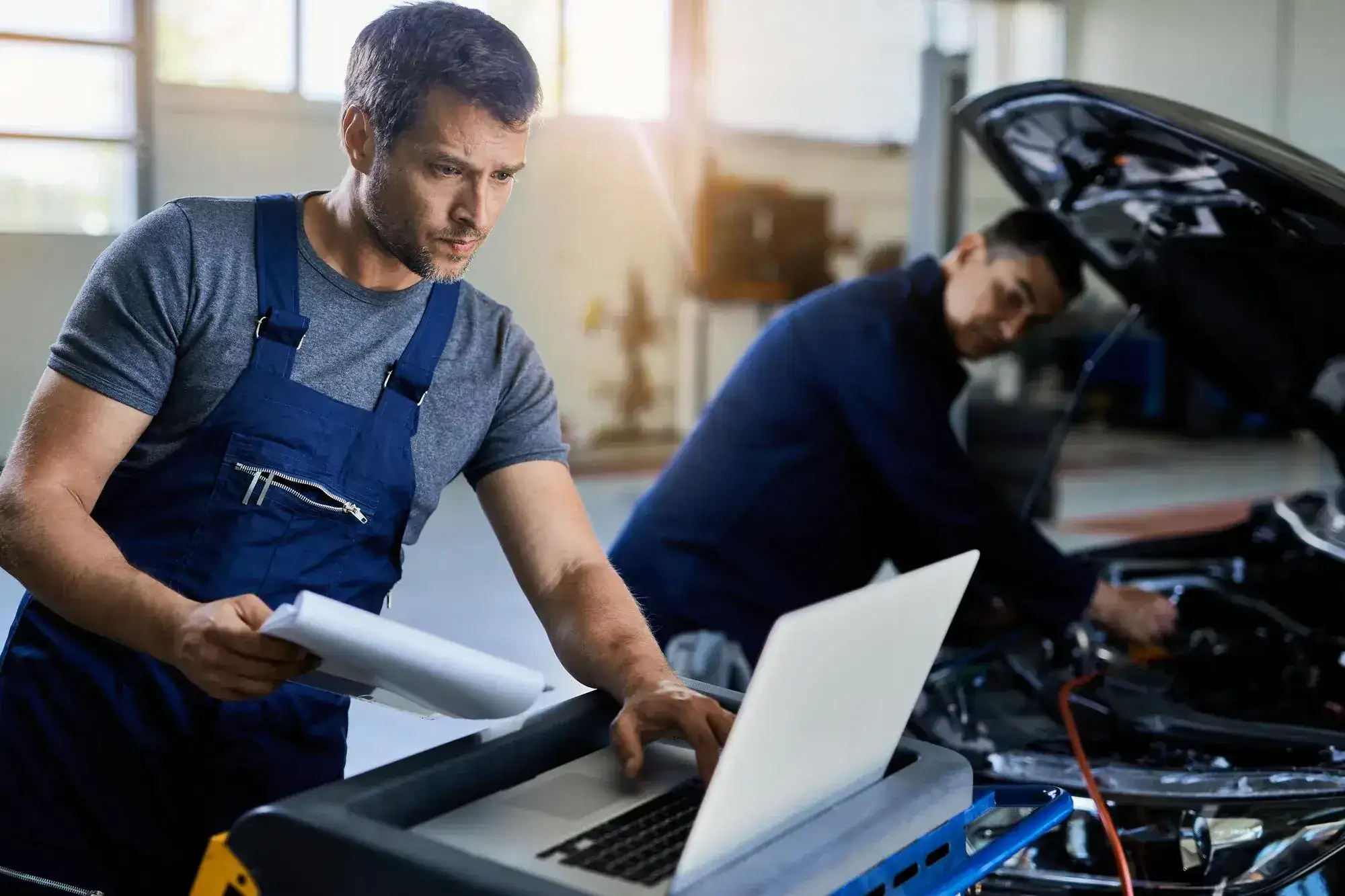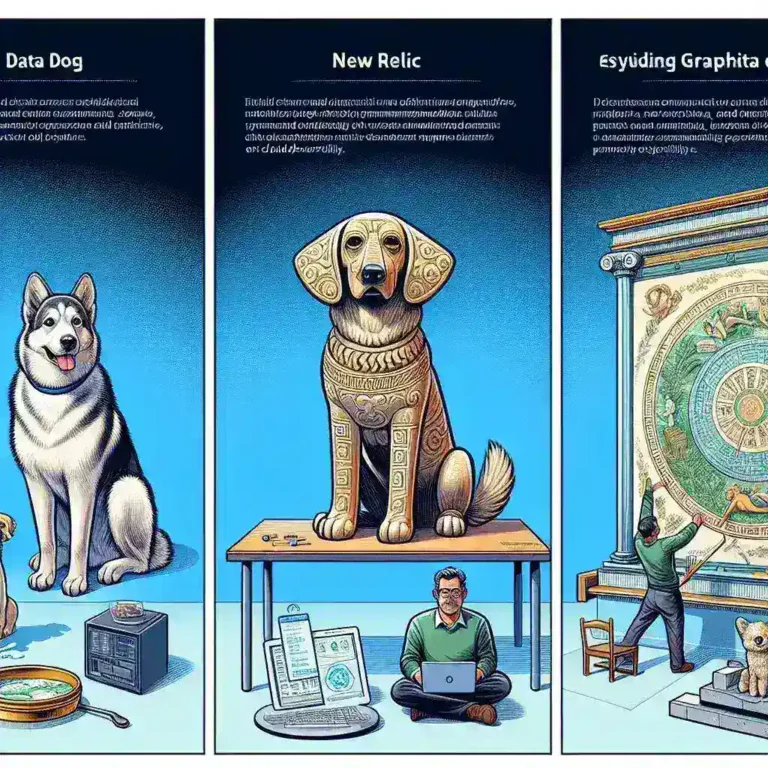How AI Is Transforming the Automotive Repair Industry
In recent years, artificial intelligence (AI) has revolutionized various sectors, including healthcare, finance, and manufacturing. But one area where AI is making a particularly significant impact is the automotive repair industry. From improving diagnostic accuracy to enhancing customer service, AI is transforming how vehicles are maintained and repaired. Curious to know more about how AI is reshaping this industry? Let’s dive into the details.
The Rise of AI in the Automotive World
The automotive industry has long been a leader in adopting cutting-edge technology. From the early days of assembly line manufacturing to the development of hybrid and electric vehicles, the industry continuously seeks new ways to innovate. AI, or artificial intelligence, is the most recent technological breakthrough reshaping the automotive repair landscape.
Vehicles are becoming smarter, equipped with complex systems that require advanced diagnostic tools to manage their maintenance. As vehicles evolve into sophisticated machines with sensors, onboard computers, and electric components, the need for precise and efficient repair solutions has become more evident. Traditional repair methods, which often rely on manual diagnostics and human interpretation, fall short in keeping up with this rapid technological advancement. This gap is where AI steps in, offering a more efficient, accurate, and scalable solution to modern-day automotive challenges.
Key AI Technologies Shaping Automotive Repairs
Artificial intelligence is not a singular technology but rather a collection of various technologies that, together, revolutionize the automotive repair industry. Below are the key AI technologies that are currently making a significant impact in the sector:
Machine Learning and Predictive Analytics
Machine learning, one of the primary components of AI, allows systems to learn from historical and real-time data to predict future outcomes. In automotive repairs, this technology is particularly valuable for predicting vehicle malfunctions before they occur. By analyzing patterns in historical repair data, driving behaviors, and vehicle sensor information, AI can predict when a part is likely to fail. For instance, AI systems can forecast issues such as battery degradation, engine misfires, or brake wear well in advance. This predictive capability allows vehicle owners and repair shops to act proactively, addressing potential problems before they escalate into major, costly repairs or dangerous breakdowns.
One of the biggest advantages of predictive analytics is that it minimizes downtime for both drivers and repair shops. Rather than waiting for something to go wrong, drivers can be alerted about potential issues and schedule maintenance in advance. This not only extends the lifespan of the vehicle but also saves time and money by preventing more significant damage. Moreover, this proactive approach enables repair shops to optimize their workflow by scheduling maintenance more efficiently, reducing wait times, and enhancing customer satisfaction. AI-driven predictive maintenance is a win-win for both mechanics and vehicle owners.
Computer Vision in Automotive Repairs
Computer vision is another crucial AI technology revolutionizing the automotive repair industry. This technology involves training AI systems to interpret and analyze visual information, such as images or videos. In the context of automotive repairs, computer vision can be used to inspect vehicles for damage, assess the severity of the damage, and even generate repair estimates. For example, after a collision, a repair shop can use an AI-powered computer vision system to scan the damaged vehicle. The system can then identify specific parts that need repair or replacement and provide an estimate for the cost and time required to complete the work.
The use of computer vision technology has several key benefits in automotive repairs. First, it speeds up the damage assessment process, reducing the time it takes to provide customers with repair estimates. Second, it enhances accuracy by eliminating human error in damage evaluation. Third, computer vision can be used remotely, meaning vehicle owners can upload photos of their car’s damage to a repair shop’s system, and the AI can analyze the images without the need for an in-person inspection. This not only improves efficiency but also enhances customer convenience, particularly in situations where time and distance are factors. By combining computer vision with other AI technologies, automotive repair shops can deliver faster, more accurate services to their customers.
To recap, several AI technologies are currently shaping the future of automotive repairs, each contributing in different ways:
Machine Learning and Predictive Analytics:
- Helps prevent vehicle malfunctions by analyzing historical data.
- Allows for proactive maintenance scheduling, reducing downtime and repair costs.
Computer Vision:
- Enables fast and accurate damage assessments using image recognition.
- Facilitates remote inspections, enhancing customer convenience.
These technologies not only streamline the repair process but also ensure vehicles are maintained at optimal performance, ultimately transforming the entire automotive repair experience.
Automated Vehicle Diagnostics: Faster and More Accurate
AI has significantly advanced the field of vehicle diagnostics, bringing about faster and more precise solutions compared to traditional methods. This transformation is one of the most critical innovations in the automotive repair industry, offering numerous benefits to both repair shops and vehicle owners.
AI vs. Traditional Diagnostic Tools
Traditional diagnostic tools in the automotive industry often rely on manual input and the expertise of mechanics to interpret data. This process can be time-consuming, and even experienced professionals may sometimes overlook issues or misinterpret data due to the sheer complexity of modern vehicles. As cars become more advanced, with complex electronic and mechanical systems, the limitations of traditional diagnostic methods become more apparent. These tools generally require a lot of manual testing, trial and error, and various diagnostic checks to pinpoint the problem, which can lead to longer repair times and less accurate results.
In contrast, AI-powered diagnostic tools use advanced machine learning algorithms to analyze data directly from the vehicle’s onboard sensors. These systems can scan and interpret massive amounts of data within seconds, identifying potential issues faster and with greater accuracy. For example, while traditional tools may take time to detect a malfunctioning engine part, AI-based diagnostics can predict such issues well in advance by analyzing patterns in sensor data. The results are more precise diagnoses, faster repair times, and ultimately a more efficient repair process.
| Aspect | Traditional Diagnostic Tools | AI-Based Diagnostic Tools | Benefit of AI |
| Speed | Slower, manual interpretation | Instant, real-time analysis | Faster diagnostics, reduced wait times |
| Accuracy | Prone to human error | Highly accurate, data-driven results | More precise identification of problems |
| Data Handling | Limited data processing | Can handle vast amounts of data | Better insight into complex vehicle systems |
| Maintenance | Reactive (after problem occurs) | Predictive (before issues arise) | Preventive maintenance, reducing breakdowns |
Real-time Data Collection and Analysis
AI-based diagnostics not only offer speed and accuracy but also bring real-time monitoring and analysis into the mix. Modern vehicles are equipped with numerous IoT sensors that continuously collect data on various aspects of vehicle performance, such as engine temperature, oil levels, brake conditions, and more. This data is instantly transmitted to AI systems, which can analyze it in real time. This constant monitoring allows for the early detection of potential problems before they develop into serious issues, something traditional tools cannot do as efficiently.
For example, if an AI system detects that a car’s brakes are wearing out faster than expected, it can alert the vehicle owner or mechanic immediately, even before the driver notices any performance issues. This proactive approach enables repair shops to address problems early, reducing the risk of expensive repairs down the line. Moreover, AI systems can provide mechanics with detailed reports that outline not just the current issue, but also future concerns based on data trends. This results in fewer surprises for both the mechanic and the vehicle owner, making the repair process more transparent and predictable.
AI in Predictive Maintenance
Predictive maintenance is another area where AI is having a profound impact on the automotive repair industry. By leveraging the power of AI, repair shops and vehicle owners can shift from a reactive to a proactive approach, minimizing downtime and repair costs.
Minimizing Downtime with Predictive Maintenance
One of the key benefits of AI in predictive maintenance is its ability to anticipate when vehicle parts are likely to fail. Instead of waiting for a part to break down and cause a major repair, AI systems analyze data from various sensors in the vehicle to detect signs of wear and tear. For example, by monitoring engine performance, fluid levels, or tire pressure over time, AI can determine when these components are nearing the end of their lifespan. This allows repair shops to schedule maintenance at a convenient time before a breakdown occurs, drastically reducing the time a vehicle spends in the shop.
For both repair businesses and customers, minimizing downtime is crucial. For businesses, it means they can manage their repair schedules more efficiently, avoiding the rush of emergency repairs that often disrupt operations. For customers, less time in the repair shop means more time on the road, reducing inconvenience. This proactive approach also extends the overall life of the vehicle, as parts are replaced before they fail, maintaining the vehicle’s performance and safety at optimal levels.
Reducing Repair Costs Through AI
Predictive maintenance doesn’t just minimize downtime—it also saves money. Repair costs can quickly escalate when a vehicle part fails unexpectedly, often causing damage to other components in the process. AI helps avoid such costly scenarios by identifying issues early. For instance, if an AI system detects that a vehicle’s alternator is showing signs of wear, the mechanic can replace it before it fails completely, avoiding additional damage to the engine or battery. This reduces the cost of repairs significantly, as preventive maintenance is almost always less expensive than emergency repairs.
Additionally, AI can prioritize repairs based on urgency and cost-effectiveness. Instead of performing unnecessary repairs, AI systems provide mechanics with data-driven insights into which parts need attention right away and which can wait. This ensures that vehicle owners don’t spend money on unnecessary repairs, further reducing overall maintenance costs. In the long run, this cost-saving benefit makes AI-powered predictive maintenance a highly valuable tool for both automotive businesses and their customers.







